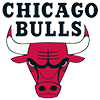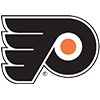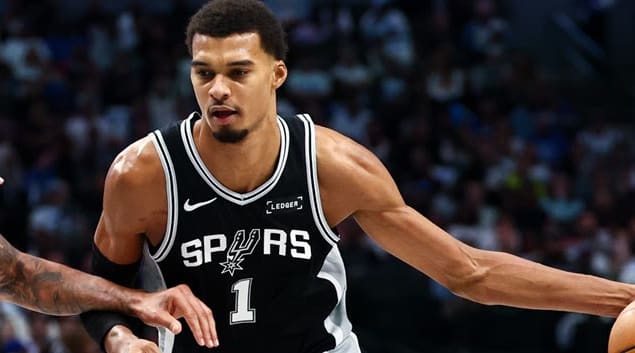Anthony Davis
Last week the number one overall pick suffered a concussion in a game against the Jazz. The injury occurred following an inadvertent elbow from teammate Austin Rivers. Once the injury occurred and a concussion was diagnosed, Davis instantly entered the standardized NBA protocol for concussion management. The program was initiated during last year's lockout shortened season and several big names, including Kobe Bryant, successfully completed the protocol following a head injury.
The program actually begins before an injury ever occurs. Prior to the start of the season, players are required to complete a neurocognitive exam that provides an injury-free, baseline score. Once a concussion is sustained, the injured player must then retake the exam and display scores at or better than their baseline results before they will be eligible to return to play. Furthermore, each individual must also remain asymptomatic (symptom free) after undergoing various exertion tests that increase the heart rate and mimic the skills required to play. Once the athlete has been cleared by the team's medical personnel, the player's medical information is sent to the director of the league's concussion program, Dr. Jeffrey Kutcher. Dr. Kutcher makes the finally decision to decide if the player may or may not return to action.
The concussion policy is sound in principal and designed to protect the players from significant trauma, in the short-term and long-term. With that in mind, it is easy to see why the NBA fined Hornets Coach Monty Williams for his critical
Anthony Davis
Last week the number one overall pick suffered a concussion in a game against the Jazz. The injury occurred following an inadvertent elbow from teammate Austin Rivers. Once the injury occurred and a concussion was diagnosed, Davis instantly entered the standardized NBA protocol for concussion management. The program was initiated during last year's lockout shortened season and several big names, including Kobe Bryant, successfully completed the protocol following a head injury.
The program actually begins before an injury ever occurs. Prior to the start of the season, players are required to complete a neurocognitive exam that provides an injury-free, baseline score. Once a concussion is sustained, the injured player must then retake the exam and display scores at or better than their baseline results before they will be eligible to return to play. Furthermore, each individual must also remain asymptomatic (symptom free) after undergoing various exertion tests that increase the heart rate and mimic the skills required to play. Once the athlete has been cleared by the team's medical personnel, the player's medical information is sent to the director of the league's concussion program, Dr. Jeffrey Kutcher. Dr. Kutcher makes the finally decision to decide if the player may or may not return to action.
The concussion policy is sound in principal and designed to protect the players from significant trauma, in the short-term and long-term. With that in mind, it is easy to see why the NBA fined Hornets Coach Monty Williams for his critical comments of the policy. Williams' comments that hinted the league is too sensitive regarding concussions are both disappointing and irresponsible.
The effects of a concussion are cumulative, meaning if Davis were to sustain another head injury, the resulting symptoms would likely be more severe and last longer. The odds of the injury are even higher if the player has yet to completely recover from the initial concussion. An upcoming star like Davis should have the opportunity to reach his potential and it would be a shame to see him cut down by an injury that could have been managed and prevented.
Davis remains under evaluation and has reported an improvement. He has reportedly been running, jumping, and riding a stationary bike, all progressive exercise included in the concussion program. All indications suggest he will return to action Friday but the final word from Dr. Kutcher still looms.
Blake Griffin
The man Davis replaced on the Olympic team is dealing with an injury of his own, as Griffin remains limited by a ruptured bursa sac in his right elbow. Bursa are fluid-filled sacs located throughout the body. These sacs act like ball bearings or buffers in a joint, reducing the amount of friction between various tissues of particular joints. If damaged they can become inflamed, resulting in pain, swelling, and tenderness. In some cases the sac will rupture, causing the synovial fluid inside to escape. These areas are rarely drained unless the swelling is severe or an infection develops. Instead, treatment consists of anti-inflammatory medication, compression, and other tools like ice and ultrasound.
For Griffin the injury means wearing a padded compression sleeve during games and reporting early for additional treatment. The elbow has yet to force him out of a game but may limit his productivity if it is limiting his range of motion. It didn't appear to be an issue Wednesday when the Clippers steamrolled the Spurs behind Griffin's 22 points and 10 rebounds. Keep plugging Griffin into your lineups but don't be surprised by the occasional off night until the elbow injury is behind him.
Danny Granger
After seeking the opinion of several specialists, the Pacers will be without their All-Star forward for three months as he recovers from patellar tendonosis. Fantasy owners frustrated by the injury should first take note of the spelling. The term tendonosis is different from the more commonly known tendinitis. Tendinitis results when a tendon becomes irritated and inflamed and is classified as an acute injury. This ailment can often be treated with rest, practice modification, and medication. If caught and managed early on, tendinitis can be treated in a week to 10 days.
On the other hand, tendonosis is considered a chronic injury and is more severe. The condition occurs when a tendon has been damaged and not properly healed or treated. Tendonosis is often very painful as nerve fibers are irritated by the body's ill-fated attempts to fix the area. The tendon is often left weak and unable to properly perform its function.
The treatment for tendonosis is also different and requires a considerable longer amount of time. Granger has attempted to treat the area with a platelet-rich plasma injection but the pain remained. He hopes to return shortly before the All-Star game but I'm betting we don't see him until after the break.
Shawn Marion
Another set of medical terminology fantasy owners can familiarize themselves with to avoid headaches, involves the words sprain and strain. Unfortunately these two words are often incorrectly used interchangeably or in place of one another. Following Marion's injury against the Blazers, various reports emerged calling the knee ailment a sprain while others called it a strain. As I hinted there's a significant difference. A strain is an injury that occurs to a muscle and is often called a "pulled or torn muscle". A sprain is used to categorize an injury that has occurred to a stabilizing ligament that connects bone to bone. Both strains and sprains vary in their recovery time and should not be viewed as the same thing. A sprained ligament can take longer to heal than a strained muscle because they often have a poor blood supply.
Marion's medial collateral ligament (MCL) sprain is a low-grade sprain, meaning the damage is minimal. He is hoping to be back in a week, missing three total games. However an injury of this nature can prove difficult for a player of Marion's class. The MCL stabilizes the knee during side-to-side movement and a sprain here limits an individual's ability to move laterally. For someone that makes their living on the defensive end of the court, Marion may need additional time to recover to insure he can stay in front of opponents. Rookie Jae Crowder has joined the starting lineup and could be a solid addition, especially in deeper leagues.
Fast Breaks
Andrew Bogut: The Warriors continue to handle Bogut conservatively, shutting down the Aussie center for the next week to 10 days. The team has already been limiting his minutes and fantasy owners should get use to him missing games as he strengthens his surgically repaired ankle.
Gerald Henderson: Henderson is expected to miss two to four weeks with a midfoot sprain in his left foot. Midfoot sprains can be extremely limiting in basketball so prepare for this take the full four weeks.
Anderson Varejao and Tyler Zeller: The Cavaliers big men are both out been sidelined for two different reasons. Varejao has returned to practice and is hoping to play Friday after sitting out a game recovering from a knee contusion in his right knee. Zeller is dealing with a fractured cheekbone and a concussion and has been sidelined indefinitely. Samardo Samuels and Tristan Thompson will see more minutes as a result.
Steve Nash: Nash continues to rehab his fractured left fibula and has begun shooting and dribbling. Unfortunately he admitted he is not ready to perform any multidirectional activities like cutting. He will be reevaluated over the weekend but doesn't appear close to returning.
Josh Smith: The versatile forward's ankle held up in his return to the court. Smith missed one game with a mild ankle sprain but played 35 minutes in a win over the Pacers. Get him back into the mix.
Jeff Stotts is a Certified Athletic Trainer, MAT, PES and the Injury Analyst for Rotowire.com. You can follow him on twitter @RotoWireATC.
























